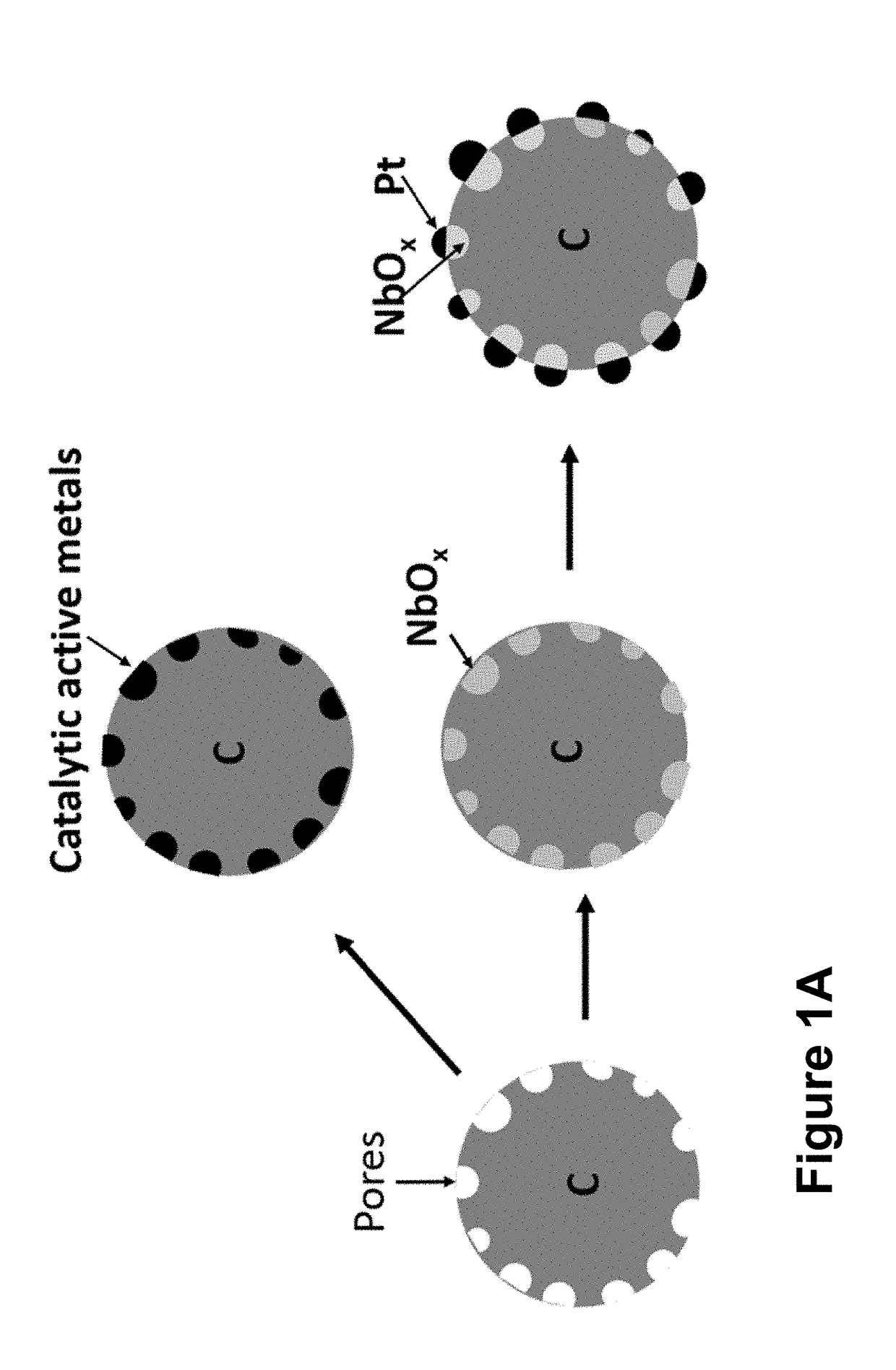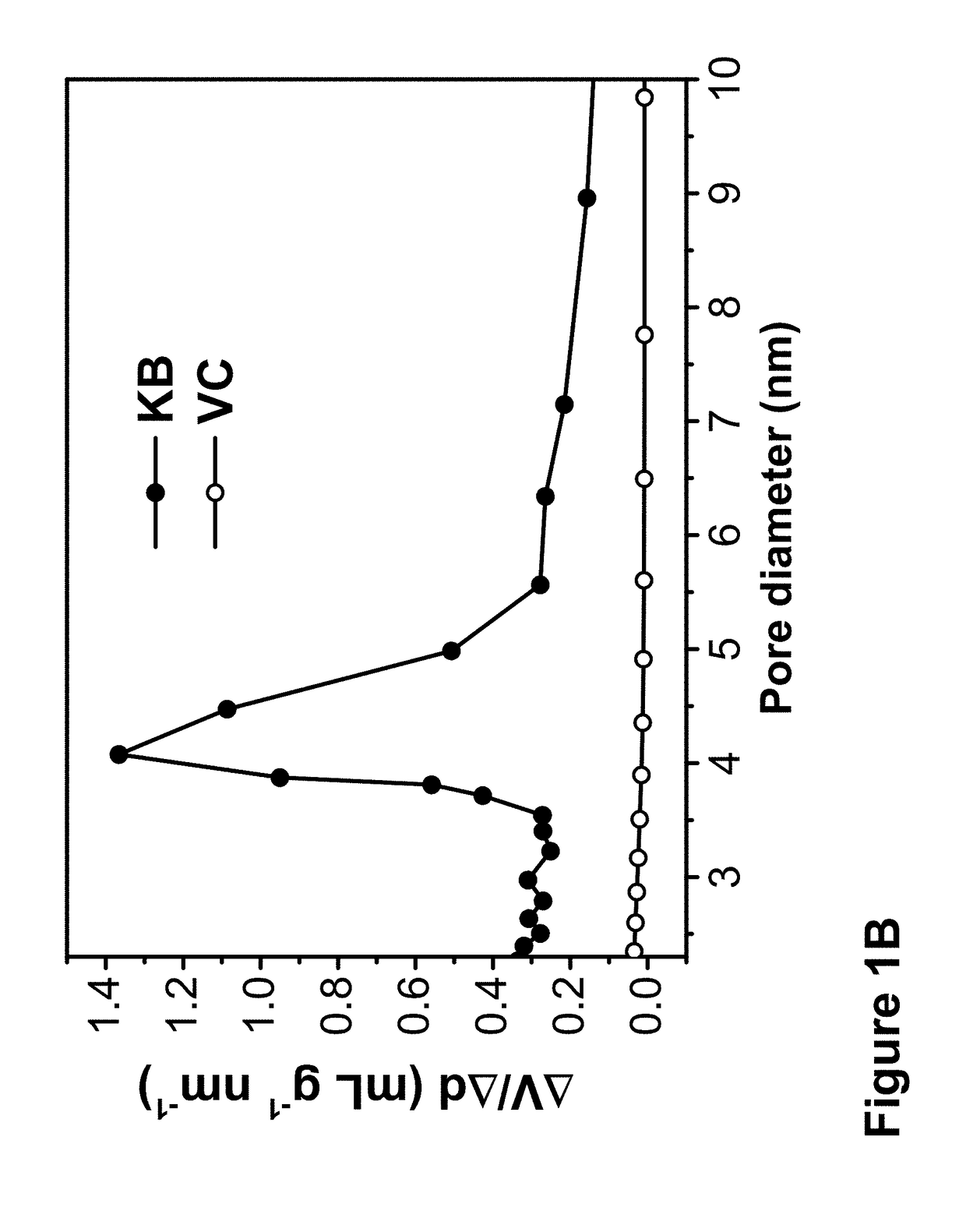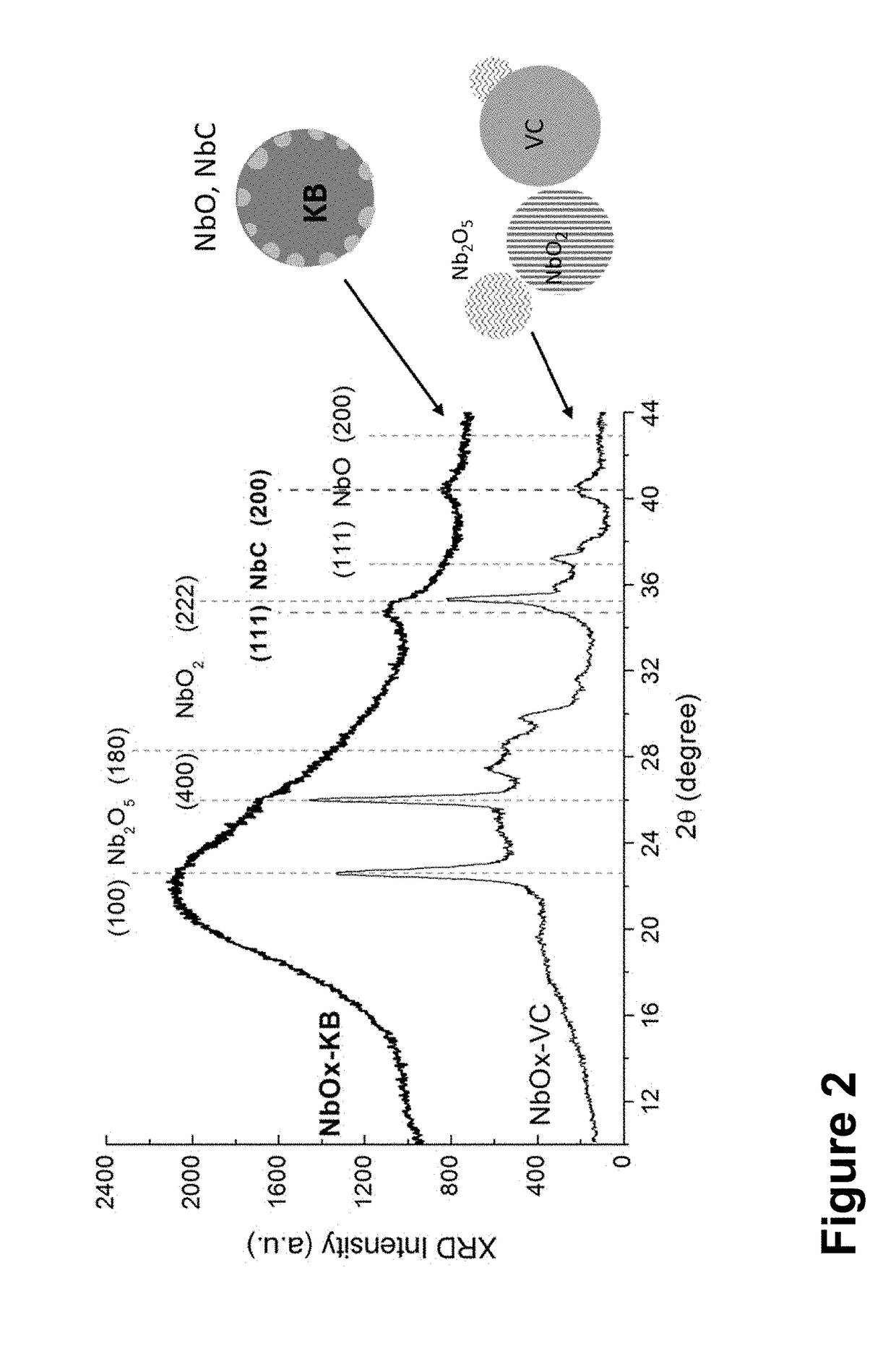Nb Oxide Embedded In Carbon And Its Use For Making Active And Durable Oxygen Reduction Electrocatalysts
a carbon nanoparticle and oxygen reduction technology, applied in the field of nanoparticles, can solve the problems of pemfc performance decay, carbon corrosion, pt particle agglomeration, etc., and achieve the effects of reducing particle agglomeration, reducing pt particle agglomeration, and increasing utilization of precious metals
- Summary
- Abstract
- Description
- Claims
- Application Information
AI Technical Summary
Benefits of technology
Problems solved by technology
Method used
Image
Examples
example 1
Embedding NbOx into carbon surface.
[0077]The pores on KB were filled with Nb precursor by sonication of ethanolic slurry containing 50 mg KB and 150 μmol of Nb(EtO)5 in 2.5 mL ethanol for 2 or more hours until liquid was completed absorbed. Water or moisture in air can react with Nb(V) compounds to form the most stable Nb2O5 (white solid) which should be avoid. The mixture was dried in vacuum oven for more than 3 hours and then grinded to fine powder. Thermal decomposition of Nb(EtO)5 and reduction of Nb(V) were carried out in a tube furnace with hydrogen as reductant for 1 hour at 220° C., 1 hour at 650° C., and 0.5 hour at 900° C.
[0078]To show the effect of surface pores on carbon on reducing Nb(V) precursor to low oxidation state oxide particles, samples were made, using the same procedure, with KB and VC, the latter does not have a plurality of small surface pores. These two carbon materials have similar particles sizes, about 30 nm in diameter, differing in specific surface are...
example 2
Low Nb Oxidation State Illustrated by Electro-Oxidation Current Peak
[0082]A thin layer of most stable Nb2O5 forms on low-oxidation-state NbOx once the samples were exposed to oxygen in air or brought into water, which then inhibits bulk oxidation at room temperature. To observe electro-oxidation of NbO surface, inks of freshly prepared NbOx—C samples were made using ethanol and iso-propanol in 6:1 volume ratio, and drop casted the ink on to a glassy carbon rotating disk electrode (RDE). FIG. 5 shows an irreversible current peak at 0.8 V in the first positive potential sweep, which indicates the average x2 (above 1.1 V). [Zhang, L.; Wang, L.; Holt, C. M. B.; Navessin, T.; Malek, K.; Eikerling, M. H.; Mitlin, D. J. Phys. Chem. C 2010, 114 (39), 16463-16474] The low peak potential and high integrated net charge observed suggest that the Nb (V) precursor was mostly reduced to NbC and NbO. Some are in crystalline form as seen by the weak XRD peak and some are amorphous.
[0083]In summary, ...
example 3
Pt Deposition on NbOxC
[0084]The reducing power of the portion of embedded NbOx exposed on the surface was utilized to create Pt nucleation via galvanic reaction between NbOx and Pt precursor in solutions. Further Pt particle growth may be assisted by adding mild reducing agents, such as ethanol or citric acid.
[0085]FIG. 6A shows the XRD for a sample made by immersing NbOx-C made using KB in deaerated K2PtCl4 aqueous solutions at 45° C. with stirring for 4 to 5 hours. Without any other chemicals, the emerged Pt (111) and (100) diffraction peaks at 39.76 and 46.23 degrees, respectively, show the formation of Pt particles via galvanic reduction by NbOx. In comparison the XRD curve for KB treated in the same way exhibited no diffraction for Pt, confirming Pt deposition does not occur on carbon surface. Estimated from the Pt(111) peak, average Pt particle sizes are 5.3 nm and 4.5 nm for the samples made with Pt:Nb atomic ratio in precursors being 1 and 0.5, respectively, which is close t...
PUM
| Property | Measurement | Unit |
|---|---|---|
| diameter | aaaaa | aaaaa |
| diameter | aaaaa | aaaaa |
| diameter | aaaaa | aaaaa |
Abstract
Description
Claims
Application Information
 Login to View More
Login to View More - R&D
- Intellectual Property
- Life Sciences
- Materials
- Tech Scout
- Unparalleled Data Quality
- Higher Quality Content
- 60% Fewer Hallucinations
Browse by: Latest US Patents, China's latest patents, Technical Efficacy Thesaurus, Application Domain, Technology Topic, Popular Technical Reports.
© 2025 PatSnap. All rights reserved.Legal|Privacy policy|Modern Slavery Act Transparency Statement|Sitemap|About US| Contact US: help@patsnap.com



